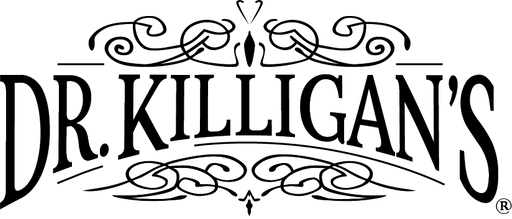What are pyrethrins?
Pyrethrins are naturally occurring insecticidal compounds derived from the beautiful chrysanthemum flowers. These potent compounds have been used for centuries to combat bothersome pests, and their effectiveness is renowned in the world of pest control.
Pyrethrins work their magic by targeting the nervous systems of insects, disrupting their delicate balance and leaving them in a state of paralysis. It's a swift and effective approach to dealing with pesky critters. Pyrethrins have a relatively low toxicity to mammals, including humans.
What are pyrethroids?

While pyrethrins are derived from nature, their synthetic counterparts, pyrethroids, were created to replicate the insecticidal properties of pyrethrins. These are chemically synthesized versions designed to mimic the structure and activity of natural pyrethrins. Some of their common alternative names are permethrin, resmethrin, cypermethrin, deltamethrin, lambda-cyhalothrin and bifenthrin, as well as cyfluthrin, esfenvalerate, allethrin and tetramethrin. These names represent different variations of formulations of pyrethroids used in various products.
Pyrethroids (like pyrethrins) can be found in insecticide sprays, aerosols, foggers, insecticide-treated clothing, pet shampoos and mosquito repellents. Pyrethrins can also be found in flea collars, automatic misting devices, lawn-care products and carpet sprays.
Which are more commonly used, pyrethrins or pyrethroids?

Pyrethroids are more commonly used than pyrethrins due to their enhanced stability and longevity. In terms of stability, they can withstand various environmental conditions, including sunlight and moisture. In terms of longevity, they have increased resistance to degradation, making them more persistent in the environment (when compared to pyrethrins) and reducing their need for frequent reapplication.
These factors contribute to their popularity in agricultural and public health applications, as they ensure reliable pest control over extended periods. Furthermore, their prolonged effectiveness makes them a convenient and cost-effective-option for pest control programs.
Are pyrethrins safe?
Pyrethrins, in order to make them more potent and longer lasting, are often mixed with synergists, which are synthetic (or man-made) chemical compounds. Synergists are added to enhance the effectiveness of the active ingredients. Some commonly used synergists include piperonyl butoxide (PBO), sesamex and MGK-264. Although synergists are considered low in toxicity for people, I tend to veer away from any synthetic compound when there are more natural, safer options available.
Are pyrethroids safe?

Pyrethroids are more commonly used than pyrethrins. I, therefore, wanted to shed some light on the outcomes of their increased use. An ACS Publications study, stating that the use of these pesticides is indeed soaring, especially since the 2001 U.S. federally mandated phase-out of residential uses of toxic, poisonous organophosphates (OPs), looked at the urinary samples of 90 northern California families, (which included adults and children). In this study, these families had “substantially higher pyrethroid metabolite and lower TCPy urinary concentrations” in their urine samples (when compared to the National Health and Nutrition Examination Survey (NHANES) 2001–2002 of the general U.S. population). Its findings highlight the potential impact of pyrethroid insecticides used in indoor settings on children's exposure levels and suggests that measures to minimize exposure to these insecticides may be important for protecting children's health.
Note: TCYy, or trichloropyridinol, is a common metabolite that is formed in the body after exposure to certain pyrethroid insecticides.
In addition, and although epidemiological studies -or those that focus on investigating and understanding the patterns, causes and effects of health and disease in specific populations- of pyrethroids are not as prolific as those of other more common insecticides (such as organophosphates), literature suggests that pyrethroid exposures may adversely affect the reproductive system and developing nervous system. An article published by The National Library of Medicine states that there is a great need to “increase awareness of workers who are occupationally exposed to pesticides about their potential negative influence on fertility and pregnancy outcome,” as it was reported that there was “a slower pace of fetal development corresponding to SGA (small-for-gestational-age) in the population of women exposed to pyrethroids,” as well as “...some indications that exposure to pesticides may contribute to stillbirth and female infertility.”

A further study explains that this exposure to and reliance upon indoor use of insecticidal chemicals, such as pyrethroids, is likely to increase where there is greater building density and disrepair. A Environmental Health Perspective study informs readers that urine samples collected from 1,452 New York City residents (for breakdown products of pyrethroids) were disproportionately exposed to chemicals.
Now, before I redirect my focus, here's a final thought to ponder. In the words of Youssef Oulhote, the lead author of a study on the exposure to pesticides and neurobehavioral deficits in children, “Pyrethroids are considered less harmful than other pesticides — but that doesn't mean they're safe."
Why choose Dr. Killigan’s?
All of our products are pyrethrin-free and pyrethroid-free. They are safe for your family and your pets. Our entire line of pest control solutions are non-toxic, better alternatives to potentially-poisonous-pesticides that can cause harm to you, your family and your furry friends.
Pyrethrins and pyrethroids are used for controlling and eliminating various insects. The brilliant news is that there are also non-toxic means to controlling and eliminating all of these pests, (including flies, cockroaches, ants, aphids, moths, mites, spiders, beetles and many other insect and arachnid populations). Dr. Killigan’s has your needs covered.
I will highlight three of our pest control solutions that you can safely use at home. See our shop page for the entire listing of our non-toxic pest control products.

Our toxin-free, family-safe spray, Six Feet Under, kills more than 60 insect species both on contact and residually for up to 30 days. With its beneficial ingredients of cinnamon essential oil and clove essential oil, it can be sprayed on floors, in entry points and elsewhere around the house to proactively stop bugs in their tracks.
Our non-toxic pantry moth traps and clothing moth traps are top-of-the-line and feature our very own advanced blue stripe formula—a synergy of double-potent moth pheromones and the stickiest glue - that is proven to outperform all other pantry moth traps on the market.
Our newest product, Dust To Dust, has active ingredients of silica, rosemary essential oil and peppermint essential oil. Use the Insect Buster and puff this safe, natural powder around the perimeter of your home and potential entry points to both keep insects away and send them pushing with the daisies.










